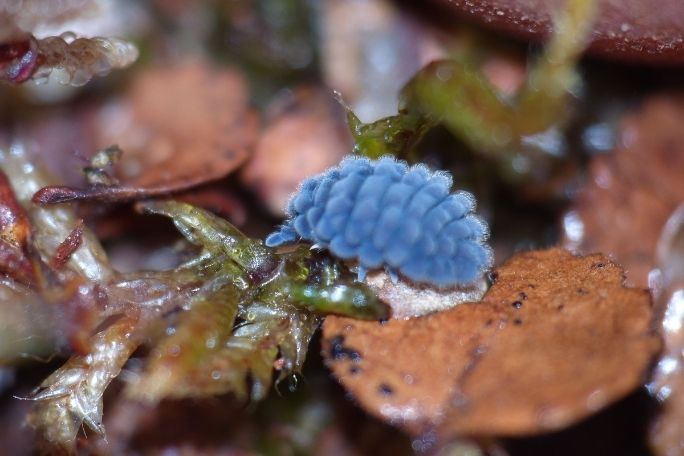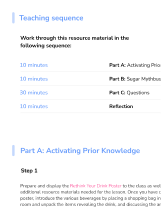Lesson summary
Students will investigate insect habitats and the ethics of studying insects. They begin by developing their mapping skills, thinking about how maps can be used to convey information, in particular, with reference to insect habitats in their schoolyard. They will then consider the role of entomologists and the ethical requirements of catching versus cataloguing species, and will participate in a role-play activity to explore these ethics in more detail.
Learning intentions:
Students will...
- recognise how the features of a map are used to convey information
- understand the role of entomologists
- understand why ethics is an important component when considering studying animals
Success criteria:
Students can...
- create a map legend to convey information
- explain what an entomologist does
- stand on a continuum and reflect on why they are there
- describe the difference between the ethics of ‘catch and release’ and ‘cataloguing.’
Lesson guides and printables
Curriculum links
Select your curriculum from the options below.
Lesson details
Curriculum mapping
Australian Curriculum content descriptions:
Year 5 English:
- Use appropriate interaction skills including paraphrasing and questioning to clarify meaning, make connections to own experience, and present and justify an opinion or idea (AC9E5LY02)
- Plan, create, rehearse and deliver spoken and multimodal presentations that include relevant, elaborated ideas, sequencing ideas and using complex sentences, specialist and technical vocabulary, pitch, tone, pace, volume, and visual and digital features (AC9E5LY07)
Year 5 Science:
- Examine how particular structural features and behaviours of living things enable their survival in specific habitats (AC9S5U01)
- Plan and conduct repeatable investigations to answer questions, including, as appropriate, deciding the variables to be changed, measured and controlled in fair tests; describing potential risks; planning for the safe use of equipment and materials; and identifying required permissions to conduct investigations on Country/Place (AC9S5I02)
- Write and create texts to communicate ideas and findings for specific purposes and audiences, including selection of language features, using digital tools as appropriate (ACSIS093)
Year 5 HASS:
- Locate, collect and organise information and data from primary and secondary sources in a range of formats (AC9HS5S02)
- Evaluate information and data in a range of formats to identify and describe patterns and trends, or to infer relationships (AC9HS5S03)
Year 6 English:
- Use interaction skills and awareness of formality when paraphrasing, questioning, clarifying and interrogating ideas, developing and supporting arguments, and sharing and evaluating information, experiences and opinions (AC9E6LY02)
- Plan, create, rehearse and deliver spoken and multimodal presentations that include information, arguments and details that develop a theme or idea, organising ideas using precise topic-specific and technical vocabulary, pitch, tone, pace, volume, and visual and digital features (AC9E6LY07)
Year 6 Science:
- Investigate the physical conditions of a habitat and analyse how the growth and survival of living things is affected by changing physical conditions (AC9S6U01)
- Plan and conduct repeatable investigations to answer questions, including, as appropriate, deciding the variables to be changed, measured and controlled in fair tests; describing potential risks; planning for the safe use of equipment and materials; and identifying required permissions to conduct investigations on Country/Place (AC9S6I02)
- Write and create texts to communicate ideas and findings for specific purposes and audiences, including selection of language features, using digital tools as appropriate (AC9S6I06)
Year 6 HASS:
- Locate, collect and organise information and data from primary and secondary sources in a range of formats (AC9HS6S02)
- Evaluate information and data in a range of formats to identify and describe patterns and trends, or to infer relationships (AC9HS6S03)
Syllabus outcomes: EN3-4A, EN3-8D, EN3-1A, EN3-2A, ST3-10LW, ST3-4WS, ST3-11LW, GE3-4
General capabilities: Literacy, Ethical Understanding, Critical and Creative Thinking, Personal and Social Capability
Cross-curriculum priority: Sustainability
Relevant parts of Year 5 English achievement standards: Students explain how language features including literary devices, and visual features contribute to the effect and meaning of a text.
Relevant parts of Year 5 Science achievement standards: Students explain how the form and behaviour of living things enables survival. Students identify variables to be changed and measured.
Relevant parts of Year 6 Science achievement standards: Students explain how changes in physical conditions affect living things. Students plan safe, repeatable investigations to identify patterns and test relationships and make reasoned predictions.
Relevant parts of Year 5 HASS achievement standards: Students develop questions and locate, collect and organise information and data from primary and secondary sources.
Relevant parts of Year 6 HASS achievement standards: Students develop questions, and locate, collect and organise information and data from a range of primary and secondary sources.
This lesson is part of the wider unit of work Backyard Bush Blitz – Years 5 & 6
Resources required
- Agree/Disagree Signs (or create your own)
- Device capable of presenting a website to the class
- Role-play Group Descriptions
- Student Worksheet – one copy per student
- Workbooks
Skills
This lesson is designed to build students’ competencies in the following skills:
- Communication
- Creativity
- Critical thinking
- Cultural understanding
- Empathy
Additional Info
Time required: 60 mins
Level of teacher scaffolding: Medium – facilitate class discussion
This is an original Cool+ lesson.


Welcome back!
Don't have an account yet?
Log in with:
Create your free Cool.org account.
Many of our resources are free, with an option to upgrade to Cool+ for premium content.
Already have an account?
Sign up with:
By signing up you accept Cool.org's Terms and Conditions(Opens in new tab) and Privacy Policy(Opens in new tab).